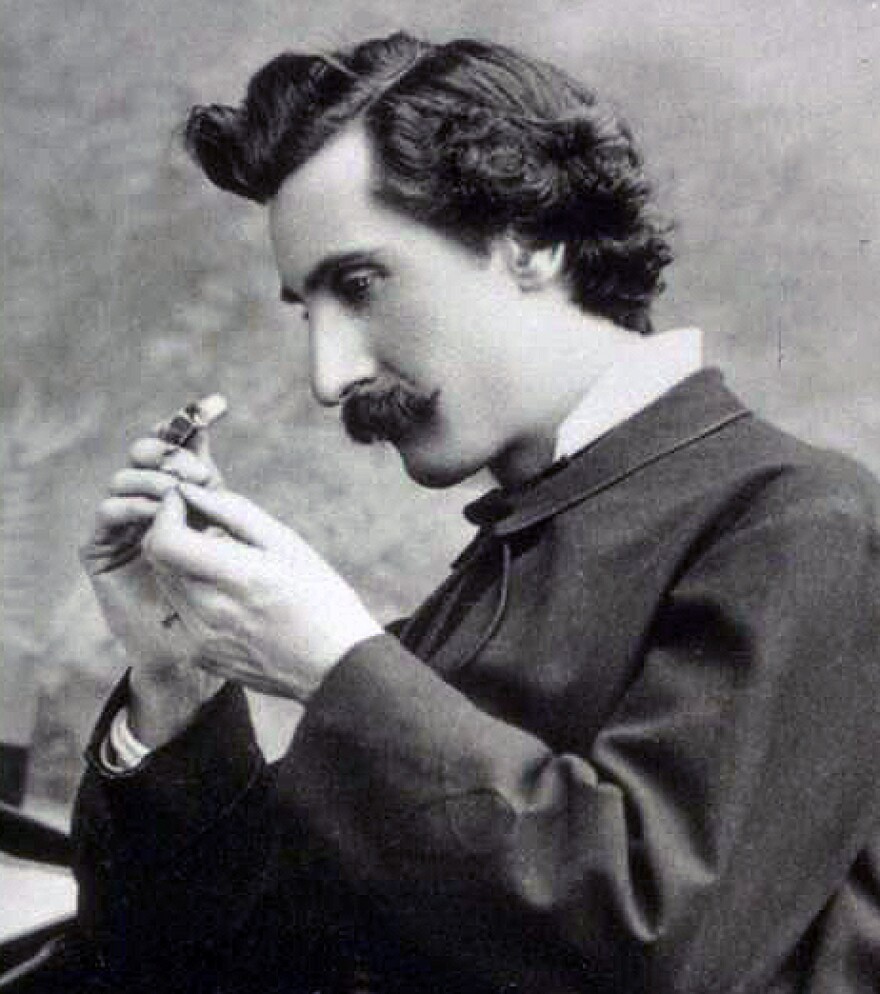For more stories like this one, subscribe to Hungry For MO on Apple Podcasts or Spotify.
Back in the 1800s, Missouri — not California — stood at the forefront of the global wine industry. And the town of Hermann, which had been established by German settlers in 1837, was at its center.
Early settlers of Hermann experimented with growing wild grape vines. Later on, new residents were incentivized with "grape lots," vacant city lots sold for only $50, as long as the land was used for grape growing.
By the 1850s, the town was home to the second largest winery in the country, Stone Hill Winery, and hosted a popular Weinfest.
But right as Missouri hit a high point, producing some of the largest amounts of wine in the country, European vines were coming under attack by phylloxera.
Phylloxera is a tiny, pale yellow, sap-sucking aphid that feeds on grape vines — destroying leaves and eating away at the roots. They emerged from the soil, spreading row to row by wind, farm equipment, or people.

"Everybody in Europe understands, this is, this is an existential threat to the wine industry," says Doug Frost, a Kansas Citian who is one of just four people in the world with the titles of both Master Sommelier and Master of Wine.
At the time, Frost says, it wasn't completely clear what was causing the vines to die.
"People were trying all sorts of crazy stuff, mustard gas, flooding the vines, burning the vines, hoping things get better," Frost says.
Some French vintners reportedly tried burying live toads under the vines to try to stop it.
None of it worked: Within 25 years, almost half of France's vineyards were destroyed. By the 1900s, the phylloxera killed 70% of the country's grape vines. The massacre became known as the "Great French Wine Blight."
A solution came from across the ocean, from, Missourian Charles Valentine Riley.

In 1868, Riley was named the first entomologist for the state of Missouri. He helped tackle the grasshopper infestation that ravaged fields in the American West, and was one of the first adopters of biological pest control.
Riley teamed up with French scientist Jules-Émile Planchon, who was working with a commission of winegrowers and politicians to investigate what destroyed their vineyards.
They figured out the phylloxera had made its way across the Atlantic from North America. As a result, the team discovered that rootstock native to North America had evolved alongside the phylloxera, so it was resistant to the pests.
An idea emerged: Wine producers could cut off the old European vines and graft them to these resistant North American rootstocks.
But Frost says it took a while to catch on.
"In Europe, the idea that planting these grapevines that bought the problem is somehow going to fix the problem was, for some people, a bridge too far," he says.
In time, as more farmers tried grafting and improved their techniques, French grape growers realized this was their only way to stop the destruction.

Not only did Missourians help discover the solution, Frost says, "they also said, 'and we’ll help. We can get these vines for you. We’ll get them to you.'"
By the the end of the 19th century, phylloxera had spread all across Europe into Africa and South America. But George Husmann, a winemaker from Hermann, personally led the effort sending hundreds of thousands of native American grape rootstocks to wine producers across the Atlantic.
"Missouri is considered to be the savior of the French wine industry," says Cat Neville, curator of the Hermann Farm Museum in Hermann, Missouri.
Today, there is still no chemical "cure" for phylloxera, but this practice of grafting vines onto resistant rootstocks remains in use as the most effective defense.
Husmann was a staunch advocate for viticulture and winemaking in Missouri, and he successfully cultivated hybrid varieties that did well here. He came to be known as the father of commercial grape growing in Missouri.
In the later part of the 19th century, Husmann moved to Napa, California, where his career flourished. He became one of the founders of that burgeoning wine region, publishing many works on grape growing and wine making up until his death in 1902.

Susan Nichols is a tour guide at the Hermann Farm Museum, a living history museum where you can see Hussman's refurbished house, explore the vineyards and experience the state's rich wine history.
"There are such hidden treasures in this town that people are not aware of and they need to be visited," Nichols says.
In 1919, just as the state was on top of the wine production world and right after Missourians had helped solve this international phylloxera crisis, Prohibition killed wine production in the state. In some cases vineyards were uprooted and barrels were drained.
It would take another three decades after the repeal of Prohibition in 1933 for Missouri's oldest wineries like Stone Hill Winery and Adam Puchta Winery to reopen — setting Hermann and the entire wine region way back.
It's only recently, Frost says, that Missouri is regaining the recognition it once had.
"We've got some really talented winemakers in the state," Frost says.
Missouri now has more than 130 wineries, with 11 different wine trails. The Hermann Wine Trail is the oldest.
Vintners across the state produce native varieties like Norton, Vignoles and Catawba — making wines that are dry, sweet, semi-sweet, sparking and everything in between.
Frost says it's time for people to explore and taste what Missouri wineries are making, and connect to the hard work and innovations that made so many other wines possible to enjoy today.
Support for Hungry For MOcomes from the Missouri Humanities Council.
Copyright 2021 KCUR 89.3. To see more, visit KCUR 89.3.





